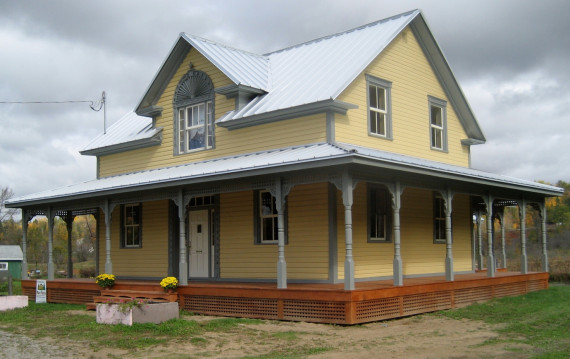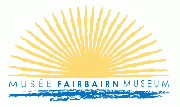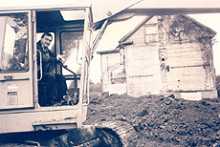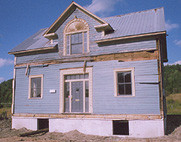
A symbol of the local community’s determination to preserve an important part of its heritage, the badly neglected former home (c.1860s) of Wakefield pioneer and mill owner William Fairbairn was placed on a new permanent foundation in 2005. The building will eventually be transformed into a bilingual regional history museum.

One of Wakefield’s oldest houses, the Fairbairn House was the home of Scottish settler William Fairbairn, who erected the first grist mill on the La Pêche River in 1838, which led to the rapid grown of Wakefield in subsequent years. The house was also the first in the village to be built of sawn lumber. It is thus considered an appropriate setting for a history museum.

The establishment of a local museum, according to the Gatineau Valley Historical Society, would be a way to “enhance the region’s potential as a recreo-tourism destination,” while at the same time “focusing attention on maintaining and preserving and bringing awareness to the heritage elements that contribute to the Gatineau Valley’s unique historical landscape.”
Another reason for a museum in Wakefield, according to the Society, which, along with the Municipality of La Pêche, the CLD des Collines-de-l’Outaouais, and local community groups, is a key player in the project, is that “there are no other museum facilities from Hull to Maniwaki.”
A Steering Committee is currently overseeing the Fairbairn Museum project, with major funding from the municipality and the CLD.

Once it is eventually restored, the historic Fairbairn House (c.1860s) in Wakefield will serve as a regional history museum.
First moved from its original location in 1993, and again in 2005, the House is currently situated near the Gendron covered bridge.
Artifacts belonging to the Gatineau Valley Historical Society and pertaining to the history of Wakefield, La Pêche, and other communities in the Gatineau Valley.
Exhibitions.
Maison Fairbairn House Solidarity Cooperative
PO BOX 195
Wakefield,QC
J0X 3G0